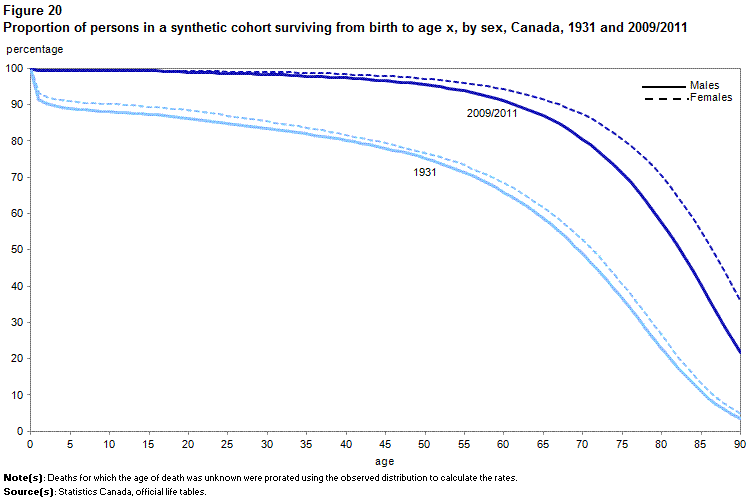In Canada, 87% of males and 92% of females reach age 65
- Many countries, including Canada, are experiencing the phenomenon of the 'rectangularization' or 'compression' of mortality. This phenomenon occurs when there is an increase in the proportion of persons surviving to advanced ages. Consequently, the curve of the number of survivors by age within an initial cohort of 100,000 persons at birth assumes a more rectangular form, owing to the proportionally higher number of deaths occurring at increasingly advanced ages.
- The 2009/2011 period life table shows that 86.9% of male newborns and 91.6% of female newborns would survive to age 65 if they would experience the age-specific probabilities of dying observed during this period. In 1931, the proportions were 58.7% among males and 61.7% among females.
- Under mortality patterns observed during the 2009/2011 period, the chances of a newborn reaching 90 years of age was 21.7% for males and 35.7% for females. In 1931, the chance was 3.6% for males and 4.7% for females.

Description for figure 20
